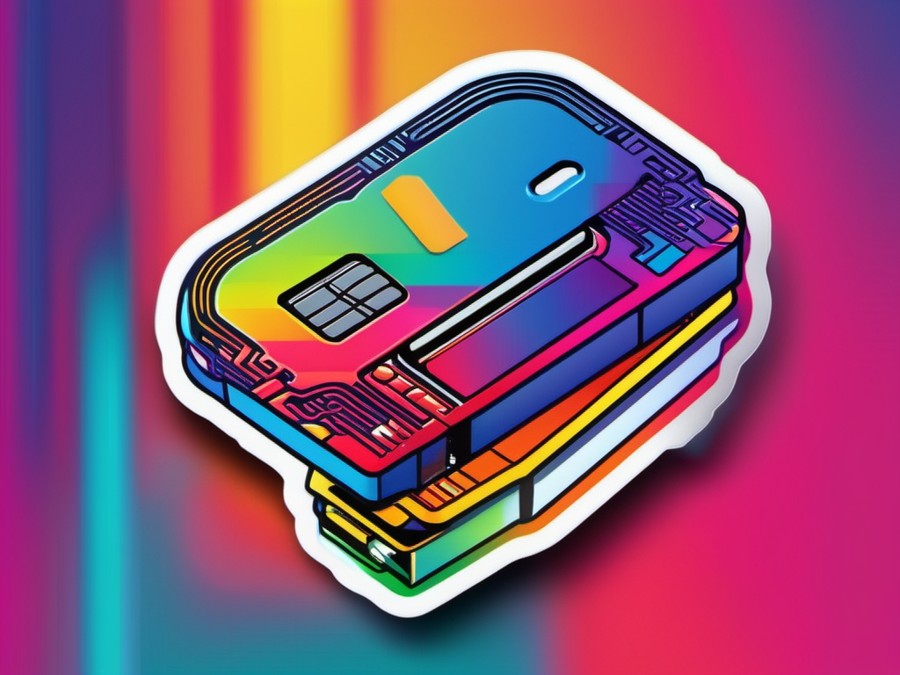· Charlotte Will · Blank Video Media · 8 min read
What is the difference between SD and microSD cards for video recording?
Discover the key differences between SD and microSD cards for video recording. Learn about speed classes, storage capacity, compatibility, and more to make an informed decision for your video projects.

Welcome, tech enthusiasts! Today, we’re diving into the world of memory cards to uncover the differences between SD and microSD cards for video recording. Whether you’re a budding videographer or an experienced pro, understanding these differences can significantly impact the quality and efficiency of your work. So let’s get started!
Understanding SD Cards
What are SD cards?
SD cards, or Secure Digital cards, are a type of memory card that’s been around since the late ’90s. They come in various forms and sizes but are primarily used in digital cameras, smartphones, and other electronic devices.
Different types of SD cards
SD cards come in several formats, each with different storage capacities and speeds:
- HDSC (High-Speed Data Transfer Rate)
- UHS (Ultra High Speed): Including UHS-I and the faster UHS-II
Key features of SD cards for video recording
When it comes to video recording, some key features to look out for include:
- Storage capacity: The more storage, the longer you can record high-quality videos.
- Speed class: Indicates the minimum write speed of the card, crucial for handling video data efficiently.
- Transfer speed: How quickly data can be transferred from the card to your computer for editing or backup.
Pros and cons of using SD cards for video recording
Pros:
- Wide compatibility: Supported by a vast range of devices.
- Larger storage options: Typically available in higher capacities than microSD cards.
Cons:
- Size: Larger and bulkier than microSD cards, which can be a drawback for portable devices.
- Price: Generally more expensive due to higher storage capacities and faster speeds.
What are microSD Cards?
Defining microSD cards
MicroSD cards, often just called microSD, are essentially smaller versions of SD cards. They’ve gained popularity due to their compact size and versatility, particularly in smartphones and other portable devices.
Different types of microSD cards
Like SD cards, microSD also come in various formats and speeds:
- HDSC (High-Speed Data Transfer Rate)
- UHS (Ultra High Speed): Including UHS-I and the faster UHS-II
Key features of microSD cards for video recording
The critical aspects to consider when using microSD cards for video recording are:
- Storage capacity: Although generally smaller than SD cards, high-capacity microSD cards are now readily available.
- Speed class: Similar to SD cards, the speed class indicates how well the card can handle video data.
- Transfer speed: Important for moving large files, such as high-definition videos, to your computer.
Pros and cons of using microSD cards for video recording
Pros:
- Compact size: Ideal for devices where space is a premium.
- Adapter compatibility: Can be used in SD card slots with the help of an adapter.
Cons:
- Smaller storage options: Although this is changing, high-capacity microSD cards were historically harder to find.
- Ease of loss: Due to their small size, microSD cards can be easier to misplace or lose.
SD vs microSD: Performance Comparison
Speed and data transfer rates
Both SD and microSD cards have varying speeds, typically indicated by the class markings. Understanding these classes is crucial:
- Class 2 (C2): Minimum write speed of 2 MB/s
- Class 4 (C4): Minimum write speed of 4 MB/s
- Class 6 (C6): Minimum write speed of 6 MB/s
- Class 10 (C10): Minimum write speed of 10 MB/s
- UHS Speed Class (U1, U3): Minimum write speeds of 10 MB/s and 30 MB/s, respectively
- Video Speed Class (V6, V10, V30, V60, V90): Designed specifically for video recording with write speeds ranging from 6 MB/s to 90 MB/s
Video recording quality: SD vs microSD
The differences in write speeds can impact video recording quality. For instance, 4K video requires faster write speeds to maintain smooth playback and avoid dropped frames. A card with a lower speed class might struggle, resulting in poor video quality or even corrupted files.
Real-world use cases for SD and microSD cards in video recording
Different devices have different requirements, and understanding these can help you make the right choice:
- GoPros and action cameras: Often require high-speed cards to handle fast-action footage.
- DSLRs and mirrorless cameras: These can use either SD or microSD cards, depending on the specific model.
- Drone photography: Drones often come with microSD card slots to save space.
Compatibility and Adapters: Making the Right Choice
Understanding adapter use for microSD cards
One of the advantages of microSD cards is their adaptability. With a reliable adapter, you can use a microSD card in an SD slot. However, not all adapters are created equal—choose one from a reputable brand to ensure reliability and avoid data loss.
Which devices are compatible with SD and microSD cards?
The compatibility of SD and microSD cards largely depends on the specific device:
- Smartphones: Modern smartphones often come with microSD card slots to expand storage.
- Tablets and laptops: Some tablets and laptops also support SD card expansion, though not as common.
- Cameras: Both DSLRs and mirrorless cameras may support either SD or microSD cards.
Ensuring seamless video recording with the right card format
When it comes to formatting, different cards support various file systems:
- FAT32: Commonly used for cameras and many other devices but has limitations in file size.
- exFAT: More versatile, supporting larger files and generally recommended for video recording.
- NTFS or other proprietary formats: Less common but can be useful in specific contexts.
Factors to Consider When Choosing Between SD and microSD Cards
Storage capacity requirements for video recording
The resolution and frame rate of your videos significantly impact storage needs:
- HD (720p): Requires less storage than higher resolutions.
- Full HD (1080p): Needs more space but still manageable.
- 4K and above: Demands substantial storage, especially at high frame rates (60 fps or higher).
Speed class: U1, U3, V6, V90—what do they mean?
Speed classes are vital indicators of a card’s performance:
- U1: Minimum write speed of 10 MB/s, suitable for Full HD video.
- U3: Minimum write speed of 30 MB/s, ideal for 4K video recording.
- V6, V10, V30, V60, V90: Video Speed Classes designed for high-bitrate video recording with write speeds ranging from 6 MB/s to 90 MB/s.
Transfer speed: Why it matters in post-production
Transfer speed is crucial for moving your video files efficiently from the card to your computer. Slower transfer speeds can lead to frustrating wait times, especially when dealing with large video files.
Durability and reliability of SD vs microSD cards for video recording
Both types of cards come with risks of data loss or corruption:
- Physical durability: Cards are generally robust, but handling with care is always advised.
- Reliability: Using cards from reputable brands like SanDisk, Samsung, or Sony can mitigate reliability concerns.
- Personal Experience: I once lost crucial footage due to a faulty card; investing in quality cards is worth the extra cost.
Making the Right Decision: SD or microSD for Your Needs?
Final thoughts on choosing the right card for video recording
When choosing between SD and microSD cards, consider your specific needs:
- Budget: MicroSD cards are generally cheaper.
- Device compatibility: Ensure the card is compatible with your device.
- Future-proofing: Opt for higher capacities and speed classes to future-proof your setup.
Future-proofing your video recording setup: SD vs microSD
Thinking ahead can save you from frequent upgrades:
- Storage: Higher capacities mean fewer card swaps during long recording sessions.
- Speed: Faster cards handle higher resolutions and frame rates, ensuring smooth playback.
- Personal Experience: Investing in a fast microSD card for my drone saved me countless headaches and ensured smooth video capture.
Conclusion
Choosing between SD and microSD cards for video recording depends on your specific needs, device compatibility, and future-proofing considerations. Both card types offer unique advantages, but understanding their differences in speed, capacity, and compatibility is crucial for making an informed decision.
FAQs
Q1: Can I use a microSD card in an SD slot for video recording?
- A1: Yes, with the help of an adapter. However, ensure the adapter is reliable to avoid data loss or corruption.
Q2: What speed class should I look for in an SD card for 4K video recording?
- A2: For 4K video recording at high frame rates, a UHS Speed Class 3 (U3) or Video Speed Class V60 or higher is recommended.
Q3: Are there any performance differences between SD and microSD cards of the same speed class?
- A3: Typically, no significant performance differences exist between SD and microSD cards of the same speed class. The main differences lie in size and compatibility with devices.
Q4: How do I choose the right storage capacity for video recording?
- A4: Consider the resolution and frame rate of your videos. Higher resolutions and frame rates require more storage space. For example, 1 minute of 4K video at 60 fps can take up around 2 GB.
Q5: Are there any compatibility issues between SD and microSD cards?
- A5: Generally, as long as you use a reliable adapter for microSD cards, compatibility issues are minimal. Ensure your device supports the card format and speed class you choose.
If you found this article helpful, consider exploring more about video recording and editing through our other guides:
- What is the difference between SD and microSD cards?
- What is the Difference Between Hardware and Software Video Converters?
- What is the best blank video media for HD recording?
- What is the Difference Between 35mm and Medium Format Film Cameras?
- What is a USB Video Converter and How Can It Benefit You?
- What is the difference between LED and LCD TVs?
- What is the Difference Between a UPS and an Inverter?
- What is the best blank video media for vintage camcorder use?
- What is the Difference Between Prime and Zoom Lenses?
Stay tuned for more insights and tips to enhance your tech experience!




